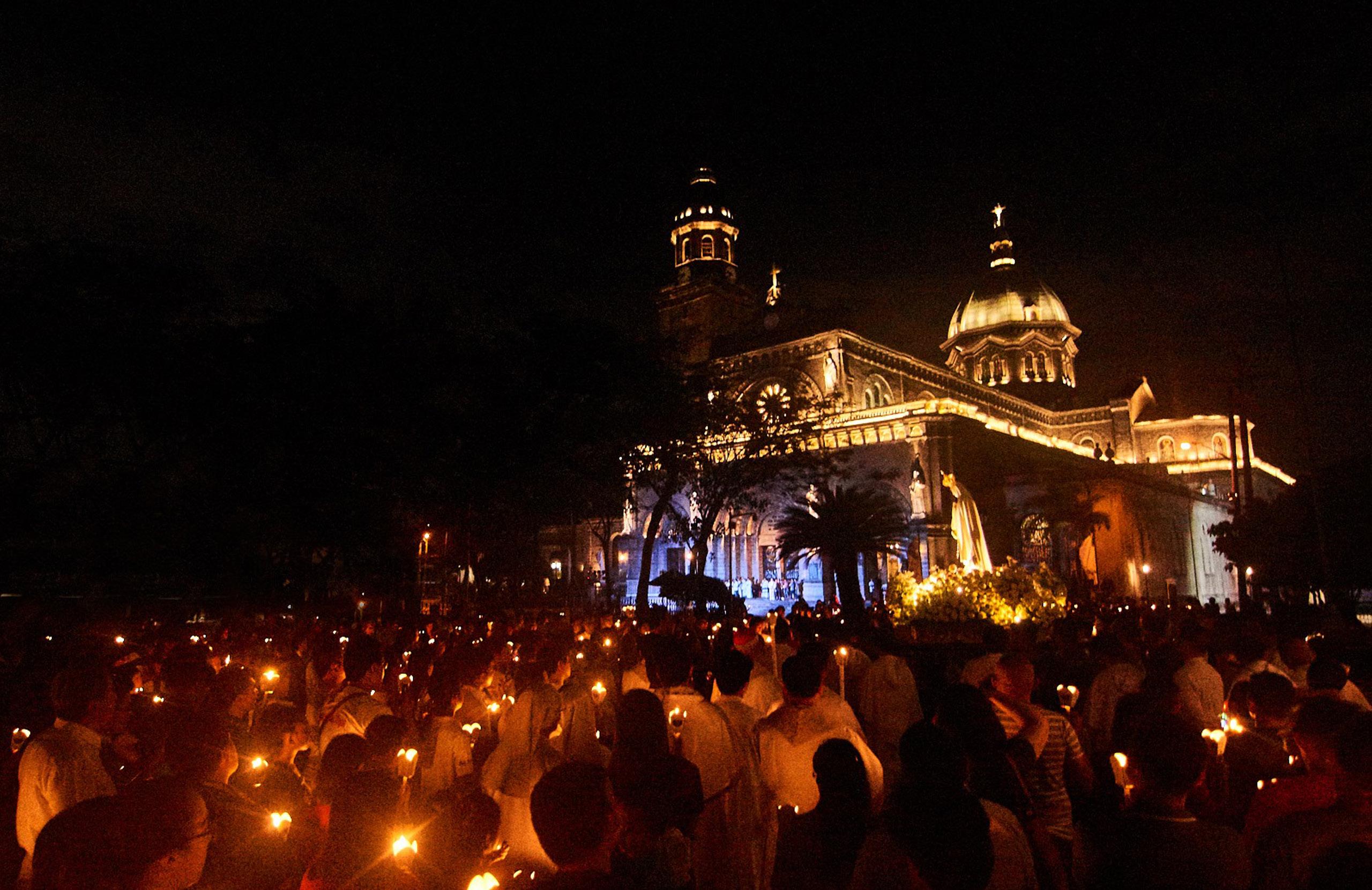
4 minute read
I HISTORY VISION
HISTORY
OPPOSITE PAGE The throne room of the Arhbishop’s Palace during the Spanish colonial period On February 6, 1579, Pope Gregory XIII, by virtue of the Apostolic Constitution Illius fulti praesidio, established Manila as a suffragan diocese of Mexico. Fray Domingo Salazar, a Dominican, was appointed its first bishop. Bishop Salazar took possession of his ecclesiastical seat in 1581. The church that was built earlier by Miguel Lopez de Legazpi, where the Manila Cathedral now stands, became the seat of the diocese and was placed under the patronage of La Purisima e Inmaculada Concepcion. Part of the Apostolic Constitution, Illius fulti praesidio, states, “… we erect and establish forever the town of Manila into a city, and its church into a cathedral, under the title ‘the conception of the same Blessed Virgin Mary’ to be held by one Bishop as its head, who shall see to the enlargement of its buildings and their restoration in the style of a cathedral church.”
Advertisement
On August 14, 1595, Pope Clement VIII, upon the proposal of King Philip II, issued the Papal Bull Super specula militantis ecclesiae elevating Manila into an Archdiocese thereby creating three suffragan sees, namely, Nueva Caceres, Nueva Segovia and Cebu. With the creation of these new dioceses, the territory of the Archdiocese of Manila was reduced to the City of Manila and ten nearby provinces, namely, Rizal, Bulacan, Pampanga, Nueva Ecija, Batangas, Laguna, Cavite, Bataan, Zambales and Mindoro. At the onset of the 20th century, the Archdiocese of Manila was further divided separating some areas to create independent sees and forming new dioceses.
The present ecclesiastical territory of the Archdiocese of Manila covers five cities, namely, Manila, Makati, Mandaluyong, Pasay and San Juan. It is surrounded by the Diocese of Kalookan in the north, the Dioceses of Cubao and Pasig in the east, and the Diocese of Paranaque in the south. The Archdiocese of Manila has 86 parishes, 58 of which are administered by diocesan priests while 28 under the religious. There are four minor basilicas, six national shrines, nine archdiocesan shrines, four chaplaincies, a sanctuary, and the cathedral.
After Bishop Domingo Salazar, 32 prelates governed the ecclesiastical territory of Manila. Bishop Salazar (1581-1594) was succeeded by a Franciscan, Ignacio Santibáñez (1596-1598). He was replaced by the Dominican Miguel de Benavides (1603-1605). Diego Vázquez de Mercado (1610-1616) was the first secular to head the Archdiocese. Following him was a succession of Archbishops coming from different religious orders – Augustinians, Dominicans, Franciscans, a Hieronymite, a Trinitarian and a Piarist. In between the religious who became Archbishops were six members of the secular clergy. In 1903, following the American occupation of the Philippines, the Archdiocese of Manila received its first non-Spanish archbishop, Jeremiah James Harty (1903-1916), from St. Louis, Missouri, United States of America. He was succeeded by an Irishman, Michael James O’Doherty (1916-1949), who led the Church in the Philippines during the Second World War. Succeeding Archbishop O’ Doherty was Gabriel M. Reyes (1949-1952), the first Filipino to become Archbishop of Manila. His short term saw the beginnings of the reconstruction work after the war. His successor, Rufino Jiao Santos (1953-
The present day cathedra of the Manila Cathedral.
1973), became the first Filipino to be elevated to the College of Cardinals on March 20, 1960. When Cardinal Santos died in 1973, Jaro Archbishop Jaime Lachica Sin was appointed Archbishop of Manila and later elevated as Cardinal on May 24, 1976. He served this local Church for nearly thirty years until his retirement in 2003 when the Vatican appointed the then Lipa Archbishop Gaudencio Borbon Rosales in his place. Archbishop Rosales became a Cardinal in 2006 and stayed in office until December 11, 2011. He was succeeded by then Imus Bishop Luis Antonio Gokim Tagle who was installed as the 32nd Archbishop of Manila on December 12. 2011 and was elevated to the Cardinalate on November 24, 2012. Cardinal Tagle was appointed Prefect of the Congregation for the Evangelization of Peoples on December 8, 2019, leaving the Archdiocese of Manila vacant until the appointment of Cardinal Jose Advincula from the Archdiocese of Capiz as Archbishop of Manila on March 25, 2021.

VISION
A people called by the FATHER in JESUS CHRIST to become a COMMUNITY of persons with FULLNESS OF LIFE witnessing to the KINGDOM OF GOD by living the PASCHAL MYSTERY in the power of the HOLY SPIRIT with MARY as companion.
THE EVOLUTION OF THE COAT OF ARMS
Original coat of arms of the City of Manila (1596) Old Ecclesiastical Seal of the Archdiocese of Manila used until 1949 Coat of Arms designed by Archbishop Madriaga (1950s)
Coat of Arms of Cardinal Rufino Santos by Galo Ocampo (1960) RCAM Coat of Arms used since 1990s New Official Coat of Arms


